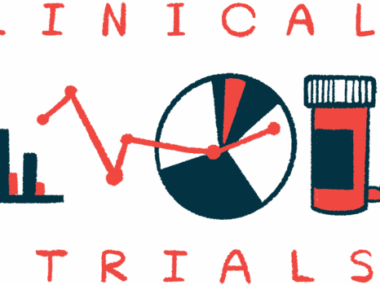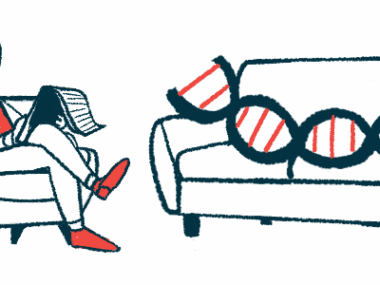Dosing begins in broader trial of Angelman syndrome therapy
Study of experimental GTX-102 open to wider range of ages, mutation types
Written by |

The first person has been dosed in a Phase 3 clinical trial testing GTX-102 (apazunersen), Ultragenyx Pharmaceutical’s experimental therapy, in a broad population of Angelman syndrome patients.
The study, dubbed Aurora (NCT07157254), is the second Phase 3 trial of GTX-102 in Angelman patients. The first, called Aspire (NCT06617429), completed the enrollment of 129 children and teenagers with only one specific type of Angelman-causing mutation a few months ago.
In contrast, Aurora aims to recruit up to 60 patients with a much wider range of ages and mutation types. Enrollment is ongoing at a site in North Carolina, with recruitment planned to open at additional U.S. sites, as well as sites in Europe and South America.
“The open-label basket design of the Aurora study will enable us to efficiently evaluate the safety and efficacy of GTX-102 in younger and older patients with Angelman syndrome and those with other genotypes [types of mutations],” Eric Crombez, MD, chief medical officer of Ultragenyx, said in a company press release. “We recognize the importance of bringing this potential new treatment to all patients, across genotypes and ages, as quickly as possible.”
Angelman syndrome therapy designed to reactivate paternal copy of key gene
Angelman syndrome is caused by mutations in the UBE3A gene. Everyone inherits two copies of this gene, but in nerve cells, only the copy inherited from the biological mother is activated. Angelman occurs due to mutations affecting this maternally inherited copy of UBE3A.
Most cases are caused by maternal deletions, where the maternally inherited UBE3A gene copy is missing entirely. Other cases are due to mutations in the maternal UBE3A gene copy that prevent it from working properly.
Less frequently, Angelman is due to uniparental paternal disomy — meaning the person inherited two UBE3A copies from the father and none from the mother — or imprinting errors, meaning the maternal copy of the gene is present but is mistakenly inactivated.
GTX-102 is a small piece of genetic material designed to reactivate the normally dormant paternal copy of UBE3A to restore gene activity in nerve cells. The investigational therapy is designed to be given by injection into the spinal canal, known as an intrathecal injection.
The medication has received breakthrough therapy designation in the U.S. for Angelman syndrome, which is meant to accelerate the therapy’s clinical development and regulatory review.
This study captures a broad spectrum of individuals living with Angelman syndrome and reflects a collective goal shared by our community—to ensure that clinical trial opportunities are available across ages and genotypes.
The ongoing Aspire study enrolled 129 children, ages 4 to 17, with Angelman caused by a maternal deletion. Its main goal is to assess the impact of GTX-102 versus a sham procedure on a measure of cognitive function called the Bayley-4 Cognitive Raw Score. Results are expected in second half of next year.
The newly launched Aurora study will enroll Angelman patients across four groups that include a broader age range and all types of disease-causing mutations.
“This study captures a broad spectrum of individuals living with Angelman syndrome and reflects a collective goal shared by our community — to ensure that clinical trial opportunities are available across ages and genotypes,” Amanda Moore, chief executive officer at the Angelman Syndrome Foundation, and Ryan Fischer, chief operating officer at the Foundation for Angelman Syndrome Therapeutics, said in a joint statement included in the press release.
Aurora trial participants broken into 4 distinct groups
The first Aurora group will include children ages 1 to 3 who have Angelman caused by a maternal deletion. All participants in the first group will be treated with GTX-102, given every three months, with the main goal of assessing the impact of treatment on the Bayley-4 Cognitive Raw Score after about a year.
The second group will enroll patients ages 4 to 17 who carry other types of mutations, namely uniparental paternal disomy or imprinting defects. The third group will comprise adults, ages 18 to 65, who have Angelman caused by any type of mutation.
In both the second and third groups, all participants will be treated with GTX-102 every three months, with the main goal of assessing Multi-domain Responder Index (MDRI) response rates after about a year. MDRI response is a composite test that looks for improvement across various measures of cognitive function, behavior, and motor function.
Aurora’s fourth group will enroll patients, ages 4 to 17, who have a UBE3A gene mutation. Two-thirds of these patients will be treated with GTX-102 from the study’s start, and the rest will receive no treatment for the first six months before starting on GTX-102. The main goal in this group is to assess MDRI response rates.
In all four groups, participants who complete the Phase 3 trial will have the option to continue receiving GTX-102 treatment as part of a long-term extension trial (NCT06415344).
“The launch of the Aurora trial marks an exciting and hopeful moment for the Angelman syndrome community,” Moore and Fischer said. “We are grateful to Ultragenyx for their continued commitment to advancing research for our loved ones and for recognizing the importance of including a diverse population of individuals in clinical trials.”






